| |
“You see, the point is that the strongest man in the world is he who stands most alone.” |
| |
Henrik Ibsen, An Enemy of the People |
There are many ways to establish the location and period in which a film is set, but I’ve never seen one quite like the opening sequence of the 1965 The Fifth Horseman is Fear (A pátý jezdec je Strach). Snappily edited shots of (then) modern-day Prague set to lively jazzy score are intercut with static images of Nazi posters listing the names of the executed and a single static shot of a distant figure look up a flight of stone steps towards the camera, set to a calmer and more mournful score. We’re in modern-day Prague, the sequence initially tells an audience that would instantly recognise the location, but let’s now take a trip back to the Second World War and tell a story that takes place when the city was under Nazi occupation. Nothing is explicitly spelt out, there are no scene-setting captions and no dialogue that references the year or the situation. We work it out for ourselves because we know our twentieth century history. We do still, don’t we?
We first encounter the film’s central character, Armin Braun (Miroslav Machácek), as he walks almost apprehensively through what looks initially like a storage warehouse for a company that sells what for the time would have been an unfeasibly wide range of goods, examining teacups and walking past a wall of clocks and into a herd of grand pianos. It takes one of Braun’s colleagues, when responding to a wrong number call, to establish that this is the city’s Registration for Confiscated Goods. Again, we’re left to interpret exactly what that means, while repeated shots of removal vans in the street and the sheer volume of items being stored at this facility give a flavour of the ominous scale of the operation. A brief conversation between Braun and a colleague is equally ripe with suggestion, as the worker notes that there is something in the works and wonders what ‘they’ are planning now, to which Braun responds, “In principle, we know, don’t we?” The man calls Braun a pessimist, which he counters by claiming he’s a realist. “I know my age and state of health,” he tells him. “Besides, I’ve seen more than enough. More than I care to see…” The worker also refers to Braun as ‘Doctor’, a seemingly throwaway greeting that will soon have great relevance to the story that unfolds. The fact that Braun and his colleagues are Jewish is never openly stated, though a single shot of the ornate ceiling is all that’s needed to suggest that the facility they have doubtless been tasked to run has been constructed inside of a former synagogue.
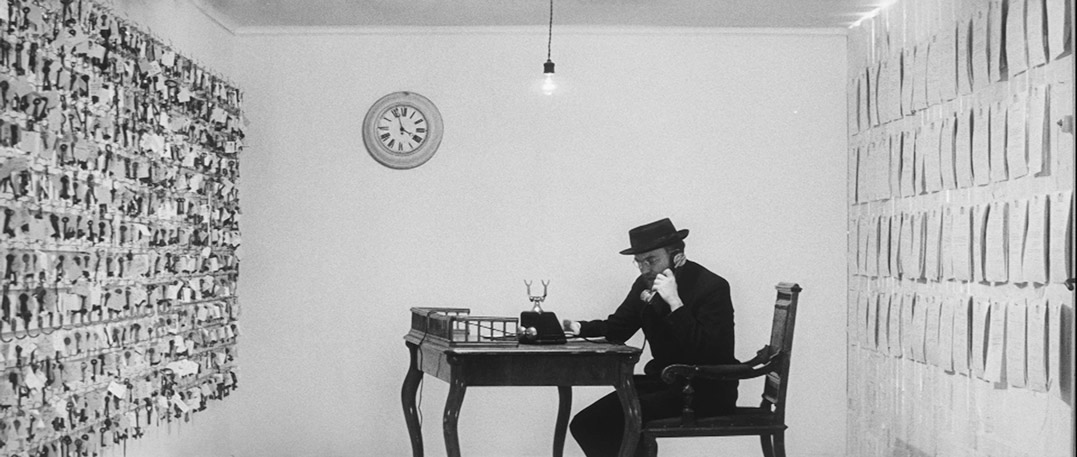
Braun then heads home, nervously, hurriedly, and seemingly haunted by removal vans and shifty-looking men, and on reaching his apartment block, he heads up a large winding staircase to his top-floor attic abode with all the attempted stealth of a neurotic and light-shy burglar. His apartment proves to be a sparse reflection of his office, a nakedly white-walled room furnished with only the essentials, save for the violin that would likely be his only source of pleasure but which he is forbiddn from playing. He’s clearly not keen to interact with his neighbours, and is thus initially resistant when one of them, a butcher named Šidlák (Ilja Prachař), asks him to treat his friend Pánek (Karel Nováček), a Resistance member, for a gunshot wound. Braun reminds him that he is not a surgeon and that he is now banned from practicing medicine, but eventually agrees to remove the bullet and dress the wound. The problem is that Pánek will need morphine for the pain, and without it will likely cry out involuntarily and alert the authorities, or at the very least someone who might be tempted to act on the message on earlier-seen leaflets encouraging citizens to rat on their neighbours. With Šidlák in no position to procure such a drug, Armin reluctantly agrees to go in search of some, even though it means putting himself at considerable further risk.
No simple plot summary could convey the exquisite manner in which The Fifth Horseman is Fear unfolds. It’s a film that says so much with seemingly so little, one whose every scene is peppered with revealing detail and whose narrative unfolds with a bewitching blend of economy and invention. A perfect example occurs early with the arrival of the injured Pánek. Honzik (a really good Karel Nováček), the young son of wealthy lawyer and owner of the building, Karel Veselý (Jiří Adamíra), wanders out into the street and parks himself down in front of a wall plastered with the aforementioned Nazi posters. He starts laughing as a drunken-looking cyclist wobbles around on the road and takes a tumble, the almost slapstick aspect of which is emphasised by the bouncy big band score. When the cyclist falls again a short distance away, Honzik laughs again, then his expression switches suddenly to one of concern. In the next shot, the man is seen stumbling through the downstairs hallway of the apartment block. When he falls again, Honzik rushes in and, after a glance upstairs to check that no-one has seen them, asks the man in a whisper what is wrong. He then returns to the front door in time to see a car full of shifty-looking officials drive by, one of whom is using a field telephone. We then move to the inside of Šidlák’s apartment, and when his hat-obsessed wife Věra (Jana Prachařová) answers the door, the injured Pánek stumbles in and collapses before her. It’s a captivatingly assembled sequence that playfully misdirects us, introduces the man whose injury will drive the subsequent narrative, and gives us our first glimpse of the officials that we will come to later fear, all in the space of three impeccably executed minutes. It even tells us a little about Honzik’s understanding of a situation that he obliquely questions his father about later, when he asks him to define what constitutes a real hero and receives the telling reply, “A man who dies unnecessarily, as opposed to one who lives unnecessarily.”
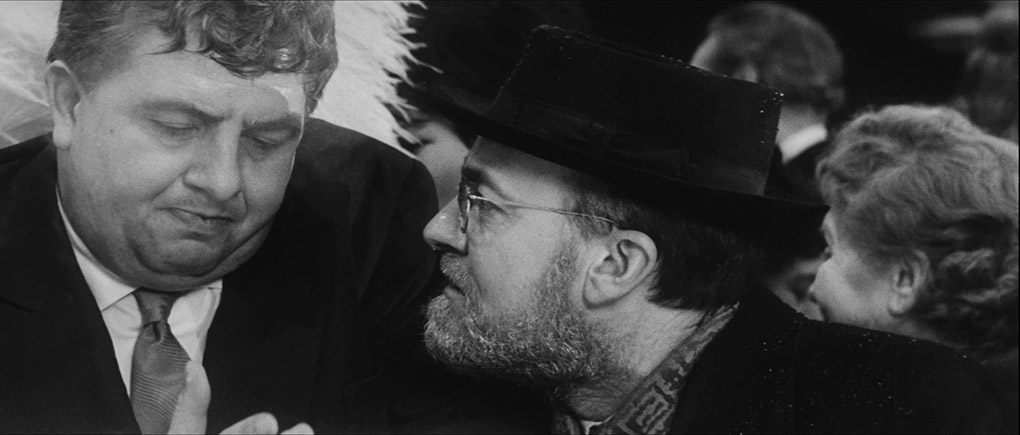
Working from a smartly structured screenplay by himself, Hana Belohradska and an uncredited Ester Krumbachová, based on Belohradska's writing, Bez krásy, bez límce, director Zbyněk Brynych is so economical in his storytelling that he is left with ample space to stage scenes solely designed to expand what we know about the characters, often lacing them with sly socio-political commentary and even an occasional dash of subjective surrealism. Rarely do such sequences play out as expected, and Brynych sometimes plays expressionistic games with the staging, editing, use of music and even lighting. When Braun visits a busy basement bar on his quest for morphine, for example, he sidles up to the drunken Dr. Wiener (Čestmír Řanda), whom we can presume from the way the two converse is a former colleague and friend. When Wiener cannot help him, the downcast Braun is cheerfully chatted up by Wiener’s young and easy-going female companion, a girl a who would not be out of place in a Godard film of the period and who persuades the virtually teetotalling Braun to take a drink, which has the effect of knocking him silly. Then things get strange. The music stops and everyone spontaneously sings a song whose lyrics ponder on how much longer night will follow day, only to freeze mid-stream to allow Braun to say into the resulting silence, “Terribly stupid,” which seems to be more of a comment on his own recklessness than the actions of those around him. Reality returns and Wiener reappears to point Braun in the direction of a possible contact at the hospital, before sitting him down and talking in non-specific terms about the terrible condition that his wife is now in. It’s something that Braun has just witnessed for himself when looking for the doctor, someone whose tragic loss of cognitive ability is then echoed by the behaviour of a woman in the bar, who is eventually carried off by the men in white coats of legend, an action that Braun alone loudly protests. He sees the woman again when he reaches the aforementioned hospital, which proves to be an asylum whose staff mistake Armin’s drink-triggered inability to clearly communicate as a sign of mental ill-health, and for a short but genuinely tense couple of minutes it looks as if they’re going to lock him away.
All of which proves a rare diversion in a film that takes place primarily inside the apartment block, all of whose residents are distinctively written, cannily cast and impressively played. There’s the aforementioned lawyer Karel Veselý and his wife Marta (Zdenka Procházková), both of whom are having extramarital affairs and whose irritation with each other eventually boils over into an explosive row, from their son young Honzik is discreetly shuffled away by the couple’s live-in maid, Anička (Iva Janžurová). There’s butcher Šidlák, whose wife Věra initially comes across as a bit of a cartoon, constantly humming a tune and brushing past Armin as he is preparing to operate so that she can check her new hat for the umpteenth time in what I can’t believe is the only mirror in the house. When Šidlák gives her Pánek’s gun to dispose of, however, she secretes it amongst their baby’s clothing without a word of protest before heading out. There’s the half-batty music teacher (Olga Scheinpflugová), whose inquisitive dog risks causing problems for Armin but who is later able to use her music as a show of defiance against a troublesome neighbour and unwelcome visitors. The borderline deaf caretaker, Mrs. Kratochvílová (Eva Svobodová), breeds rabbits whose storage in the building infuriates civil defence warden, Vlastimil Fanta (Josef Vinklář), an oily git who sucks up to the authorities and is suspected by the others of being a snitch. All of them have their moments, and most have scenes exclusively featuring them and set inside their apartments, some of which are long enough to give the early impression that Braun will not be the central figure after all but part of a diverse and interesting ensemble. Arriving later in the story is a man only identified as the Commissioner (a quietly intimidating Jirí Vrstála), who enters the apartment block with three dark-dressed goons to conduct a search for Pánek, and despite having a title that suggests a police position, he has all the hallmarks of a Gestapo officer (his blonde hair certainly helps) without ever being specifically identified as such.
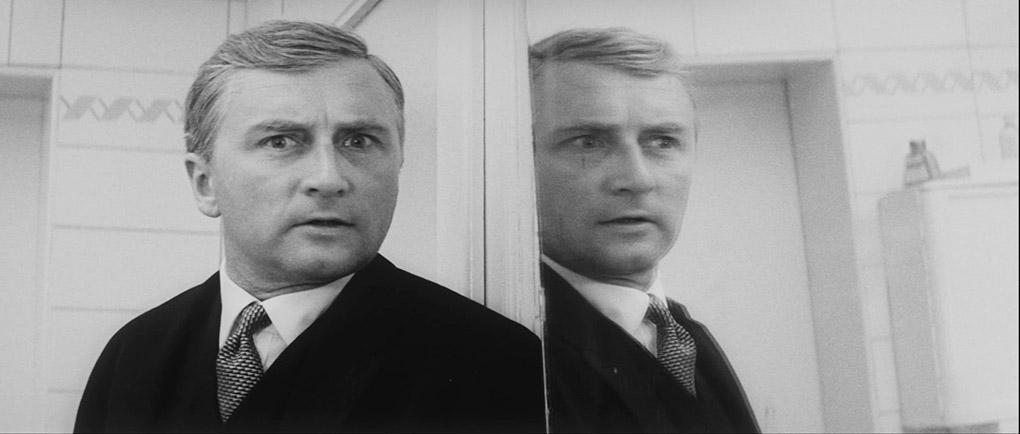
By this point, things have really complicated for Braun, who has taken it upon himself to care for and protect the injured Pánek, and in sequences that almost stray into the realms of black comedy, he finds himself dodging the inquisitive eyes of his neighbours and the stairwell’s time-release light switch to carry the half-conscious man up to his apartment on his back, like nervous Santa Clause secretly hauling a sack full of the heaviest and most delicate presents. On his way to the top he finds an unexpected ally, one whose offer of medicinal help gives rise to another blackly comic moment, and when Braun finally reaches his apartment, a visit from the Commissioner and his men gives rise to the film’s most tensely handled sequence.
Early on, the fact that Braun would risk so much to help someone he doesn’t even know and put himself at risk might seem a little out of character for man who seems to be trying so hard to hide himself away from others, but as the film progresses, it becomes evident that caring for Pánek has awakened something in Braun that he thought he had forever lost. For the first time in what may be years, he is able to practice medicine again, and this action alone seems give him a new sense of purpose, albeit one he struggles with his innate fear to fully embrace. Before the film ends, he is shown to have done so, and his final declaration is so defiantly inspiring that I found myself torn between wanting to cheer and deeply fearing what the consequence would be.
The film is strikingly shot by Ikarie XB-1 and Tomorrow I'll Wake Up and Scald Myself with Tea cinematographer, Jan Kališ, whose arresting scope compositions are frequently infused with secondary and subtextual meaning. A prime example comes early when Braun arrives at his office and sits centrally against a bare white wall whose only decoration is a clock that seems to be marking his time as a free man. On the left-hand wall hang the keys of the hundreds of houses and apartments that have been confiscated from his fellow Jews, while the right-hand one is home to rows of clipboards, to which are doubtless attached paperwork authorising the transfer of ownership that Braun is tasked with overseeing. Again, this job is subtly suggested rather than overtly stated, as he takes specific requests for accommodation from unheard voices and responds like a dutiful hotel manager, matching the apartment to the caller’s requirements and even ensuring that it will have the required artwork hanging on the wall. Only when he puts down the phone and says to himself with an air of disturbed realisation, “That’s the Lederer’s flat,” does the true meaning of his conversation sink in. “Yes…yes…on the second floor,” he mutters, then adding soberly, “We’re liquidating ourselves.”
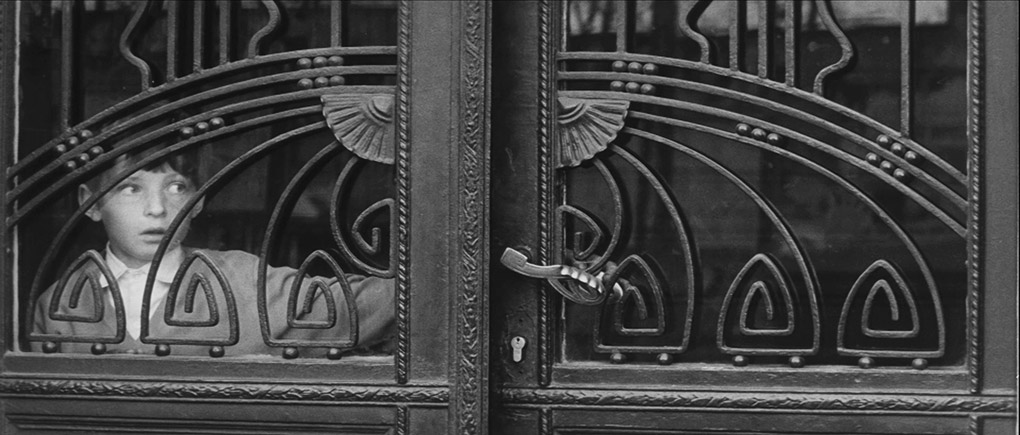
Honestly, I’m just skimming the surface here of an utterly riveting, compellingly performed and beautifully directed example of what made the Czech New Wave such essential cinema. It’s a film whose every captivating shot (you’d almost think the apartment block stairwell was designed specifically to make the best use of the scope frame), every inventive edit, every sly switch in the diegesis of the music, and every eye-catchingly constructed sequence seem to have both primary and secondary purpose, showing us one thing whilst simultaneously telling us at least one other about a character, a location, a relationship or the political situation that underscores and ultimately drives the film’s quietly arresting narrative. It’s a work that absolutely rewards second and third viewings, and I fully expect to get even more out of it when I return for a fourth after finally posting this review. I sometimes kick myself for discovering the many wonderful works of the Czech New Wave so belatedly, but the upside is that now I’m at an age when I sometimes think I’ve seen it all, there are still films that were made over half a century ago that can still genuinely knock me for six.
A new HD transfer from original materials by the Czech National Film Archive in the film’s original 2.35:1 aspect ratio, the image on this Second Run Blu-ray may in some ways be at the mercy of the condition of the prints and/or negative from which it is sourced, but this is still a strong transfer that often really shines. A few dust spots and cement join marks (white blips at the bottom of frame on a shot change) remain, and there are a couple of blink-and-you’ll-miss-them signs of damage, but none of these are seriously problematic. The contrast can be a bit unforgiving on shadow detail in darker scenes and the black levels are genuinely inky here, but in the brighter sequences, the tonal range is often close to sublime. Detail and sharpness are generally of a very high order, especially in those brighter scenes, only softening just a little in a small handful of shots. The image is stable and a fine film grain is visible, and the very slight horizontal fattening evident in some shorts was a common side-effect of certain anamorphic lenses of the period. On the whole, a handsome job.
The Linear PCM 2.0 mono soundtrack has the sort of range restrictions I’d expect of a Czech film of this vintage, which means nothing much at the bass end and slightly crispy trebles that come close to distorting on louder sounds, but never do. Clarity is never an issue, however, and if you’re fluent in Czech, you’ll have no trouble at all following the dialogue.
The optional English subtitles kick in by default on the main feature and all of the on-disc special features except the commentary track
The Projection Booth Commentary
Mike White, Kat Ellinger and Jonathan Owen – whom I’m guessing from the variations in audio quality were recording this remotely – go to town on a film that all three clearly hold in the highest regard, a view encapsulated by White when he describes it as “absolutely gorgeous” and “one of the most powerful works of the Czech New Wave.” I’m not normally a fan of commentaries in which the participants gush over a film and start sentences with “I love this…” but I found myself in complete sync with these good people, and their analysis is so sharp and the information they impart so revealing that I was as riveted to this as I was to the film itself. The always engaging and knowledgeable Ellinger makes a strong case for the contribution of costume designer Ester Krumbachová (who apparently also worked uncredited on the screenplay), connections are made to the cinema of Roman Polanski (Repulsion, Rosemary’s Baby and The Tenant all take place in a similar location), and there’s considerable discussion on the brothel sequence that was shot specifically for the film’s international release (see below). There’s tons to get your teeth into here, though my favourite moment comes when a discussion on the characters moves onto Fanta, the apartment block snitch, and White blurts out, “Oh, I fucking hate Fanta!” Let’s see that on a poster for the fizzy drink of the same name.
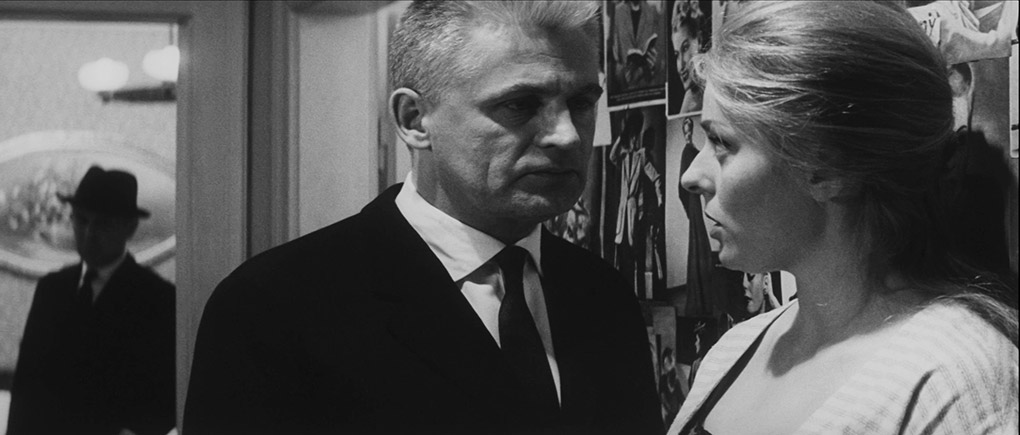
Žalm – A Film by Evald Schorm (14:12)
A short film by acclaimed Czech director Evald Schorm that seems to be a meditation on faith, death, decay and neglect, one that switches between synagogue prayers and an old Jewish graveyard, whose headstones are being reclaimed by nature and used by children as a playground. I say ‘seems to’, by the way, because I’ve not yet fully made up my mind about this one, but I certainly salute its visual poetry.
The following two special features are preceded by the same three explanatory caption screens, which I’ve reproduced below, as I see no point in rewording it and pretending I researched this for myself.
Originally released in Czech cinemas in February 1965, Zbyněk Brynych’s The Fifth Horseman is Fear was acquired for international distribution by producers Carlo Ponti and Moris Ergas.
To make the film more palatable and accessible to non-Czech audiences, Ponti and Ergas insisted on some changes to the film – notably the inclusion of a new explanatory prologue and an extended sequence set in a Nazi brothel, clearly intended to add a more risqué sensationalist aspect to the film.
Materials for this ‘International Version’ were long considered lost, with the only rumoured commercially available version being a long out-of-print Italian dubbed VHS released from 1988. Second Run have managed to locate a rare existing copy of that VHS tape, and so present these alternate sequences for the first time on home video in over 30 years.
Alternative Italian Opening Sequence (4:15)
Presented in a cropped 16:9 ratio and windowboxed on all sides, this alternate opening sequence, unique to the Italian version, opens with a montage of wartime photographs of the Nazi occupation and execution of Jews, the basics of which are outlined by an Italian narrator, who also explains the function of the Nazi posters and leaflets seen in both this and the original cut of this sequence. I can understand the thinking behind the decision to provide a degree of historical context for a non-Czech audience, but not the re-editing of the scene that follows and the replacement of Jiří Sterwald’s discordant title music with a pomp-driven military march, one that wouldn’t be out of place over shots of Adolf Hitler being driven past adoring crowds in The Triumph of the Will.
Brothel Sequence (11:14)
Added at the insistence of Ponti and Ergas, this sequence was shot by Brynych in 1967 and sat between Braun’s encounter with Weiner’s disturbed wife and his visit to what is described here as the ‘Desperation Bar’. Set in a Nazi brothel at which Braun’s sister works as a cleaner and whom Braun visits in the hope that she can procure some morphine, it does meet the brief of the producers by including some female nudity. This is most clearly evident in the early sequence where the prostitutes are forced by the brothel madam to shower as the troubled Braun looks on, and the camera drifts repeatedly up and down over their naked bodies, frankly for longer than the sequence requires. After (and before) this, however, things have a noticeably darker tone. All of the women who have been doubtless forced into this profession are shown to be deeply miserable with their fate, one of whom screams at Braun when he enters her room, then falls on to a bed and cries that she wants to die. It’s a fate that has already befallen another woman, whose body Braun discovers lying covered on a gurney, her wrists bearing the unmistakable wounds of suicide. Every bit as grim is the sequence that follows, when the cheerless women are marched like cattle into a bar packed with drunken German officers, who descend on them like a swarm of turd-stained bluebottles.
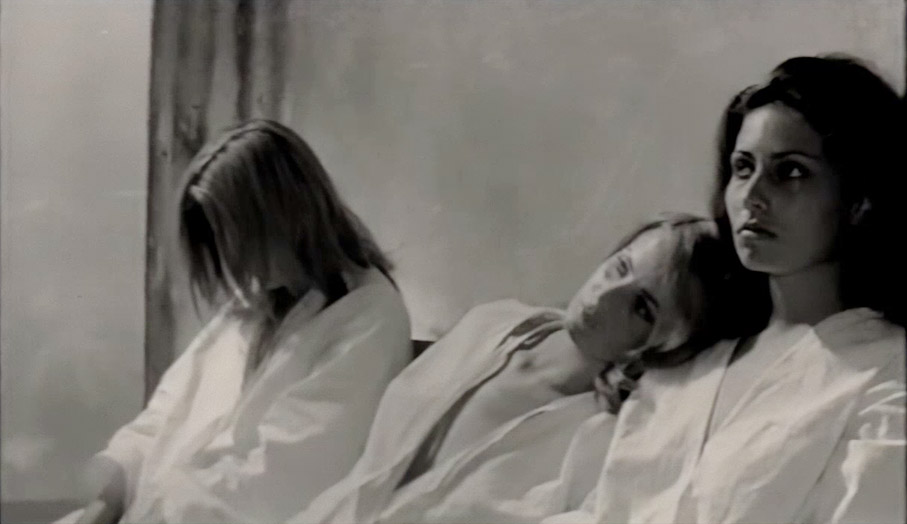
As a stand-alone sequence, it’s impressively shot, thoughtfully constructed, and possibly the most tonally dark and sobering scene in the international version of the film. It does trip up a little, however, when Braun finds his sister and she is unable to provide the hoped-for help (the reason that the brothel no longer keeps morphine further emphasises the desperation of the women forced to work there). Here, Braun’s quest morphs suddenly into over-expressed desperation, as he yells out, “I must find some! I must! I must! I must!” and dispels any ambiguity over his intentions by telling his sister that the morphine is for a man who must go on living because he is still fighting. As is pointed out elsewhere in the special features, it’s the only sequence in which we actually see a Nazi uniform – and we see many of them here – and in doing so the sequence literalises what the rest of the film has gone to great lengths to present in purely suggestive terms. There’s also a logic problem in the dialogue here. We’re shown (and a caption confirms) that Braun visits his sister after his encounter with Weiner’s disturbed wife, whom he called on in the hope of finding her husband and whom he locates immediately after this new sequence in the Desperation Bar. In the brothel sequence, after Braun has had his desperation outburst, his sister suggests that he try his old friend Dr. Weiner instead, and Braun reacts as if the idea had not occurred to him before. Then why did he go to Weiner’s house just beforehand?
All in all, it’s a fascinating sequence and a most valuable inclusion on this disc, but I’m glad it was kept as a special feature and not re-inserted into the film, something the quality and aspect ratio difference would have rendered jarring anyway. Oh, and one thing I would definitely not have realised were it not for the caption that introduces this scene is that the drunken soldier who accosts Braun at one point is played by director Brynych.
Booklet
The lead essay here is an in-depth look at the film and the career of its director by writer and researcher, Jonathan Owen. It makes for fascinating reading, and includes a whole chapter on the brothel sequence. This is followed by a second, shorter piece on Brynych and his film by German filmmaker, author, composer and actor, Dominik Graf, which acts almost as an introductory appetite whetter for the film itself.
In case it somehow hasn’t registered, I adored The Fifth Horseman is Fear, which is why, even though Second Run’s Blu-ray was released almost three weeks ago, the urge to write about it proved a little overwhelming. If you’ve even a passing interest in Czech New Wave cinema – and you should have more than that – then this is an essential purchase. The source print for the restoration may still have a few small blips, but the transfer is otherwise impressive, and the inclusion of this once-thought lost international version sequences is a huge bonus. Highly and most enthusiastically recommended.
|